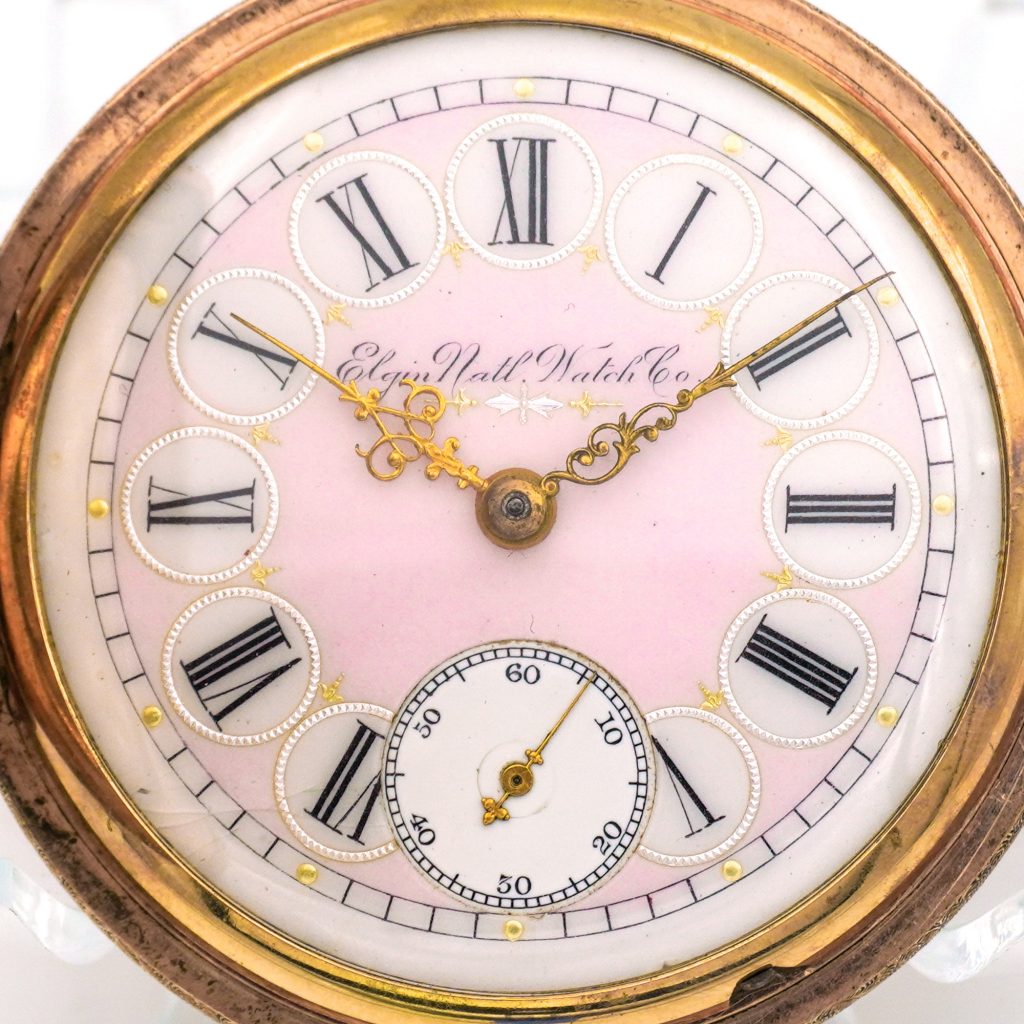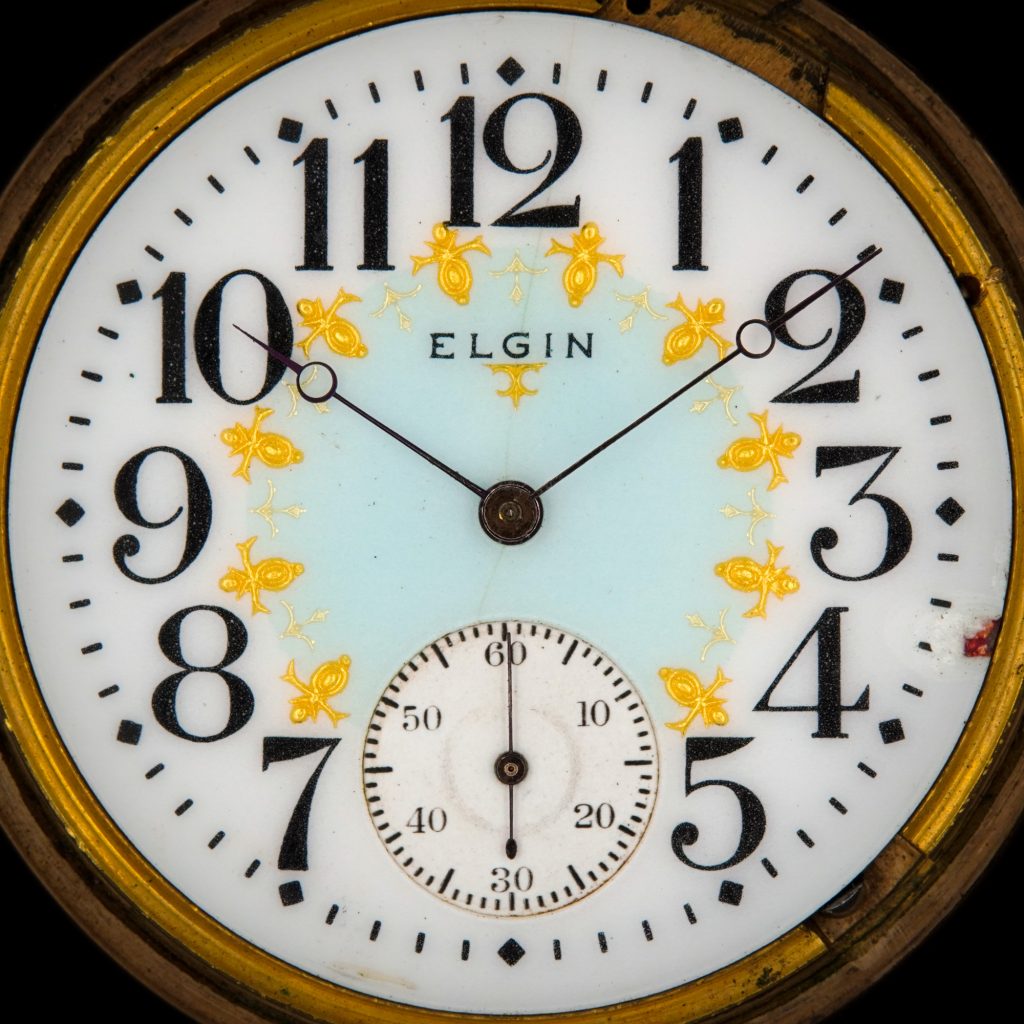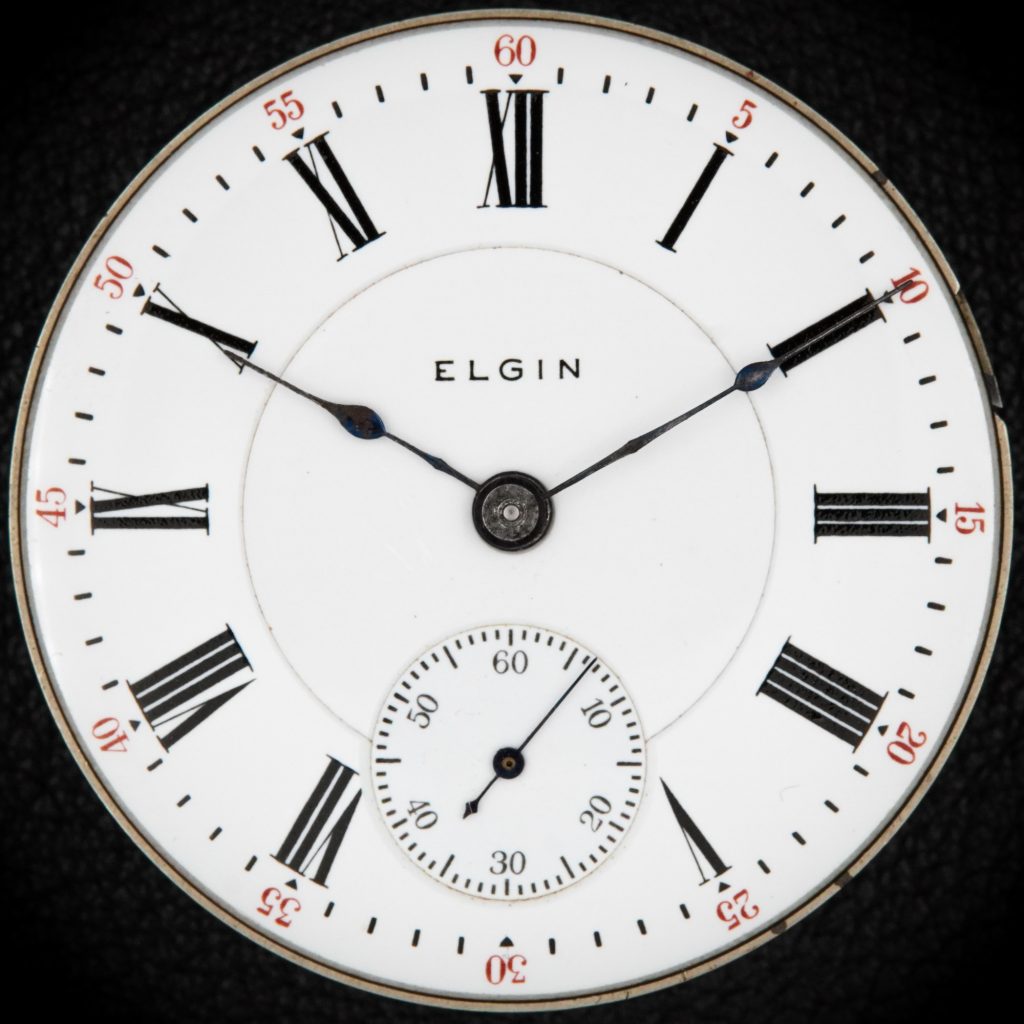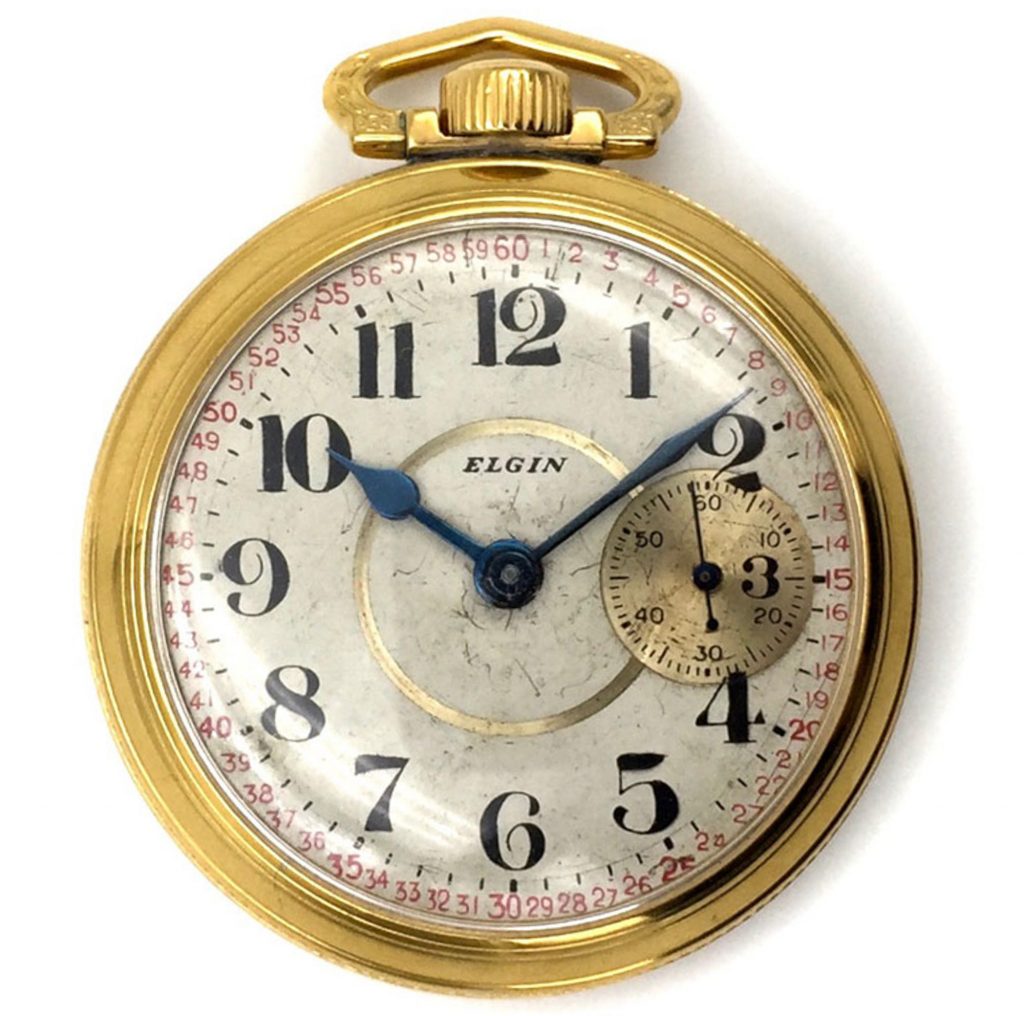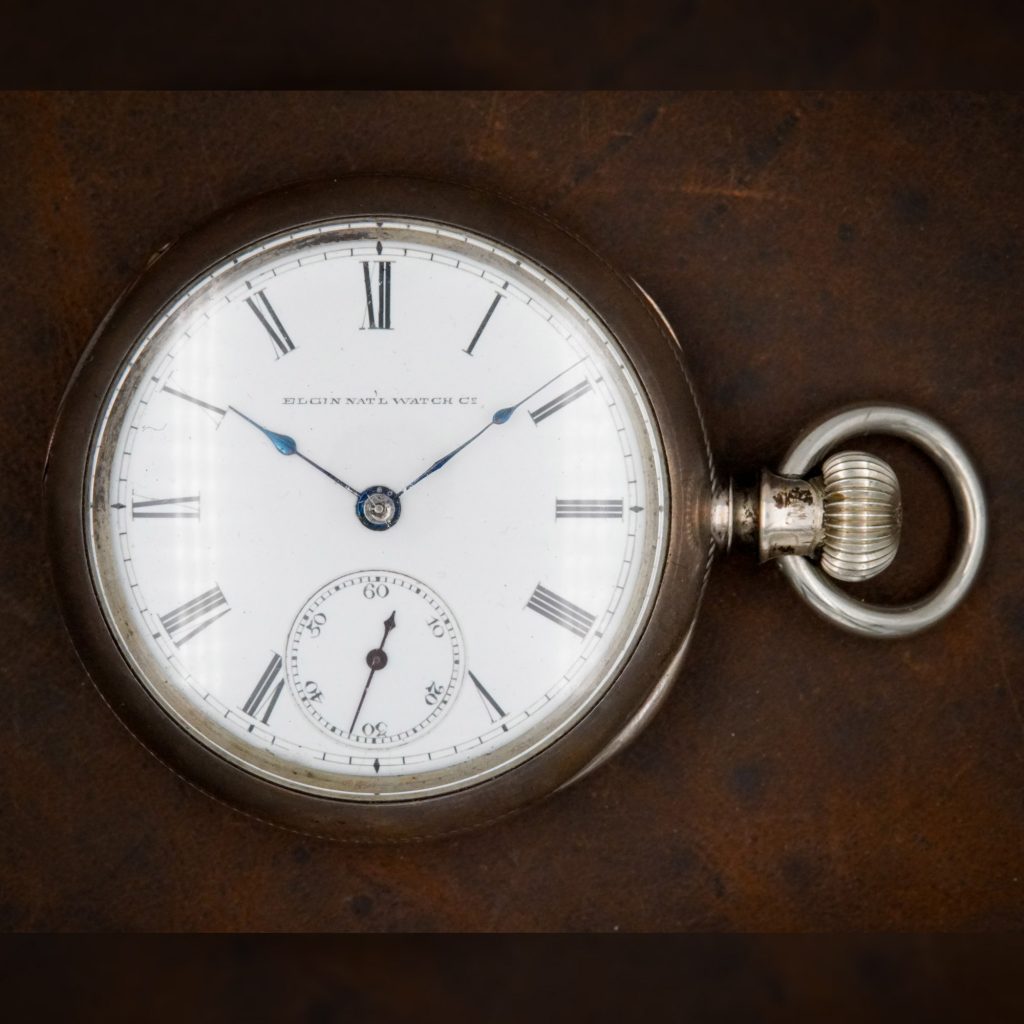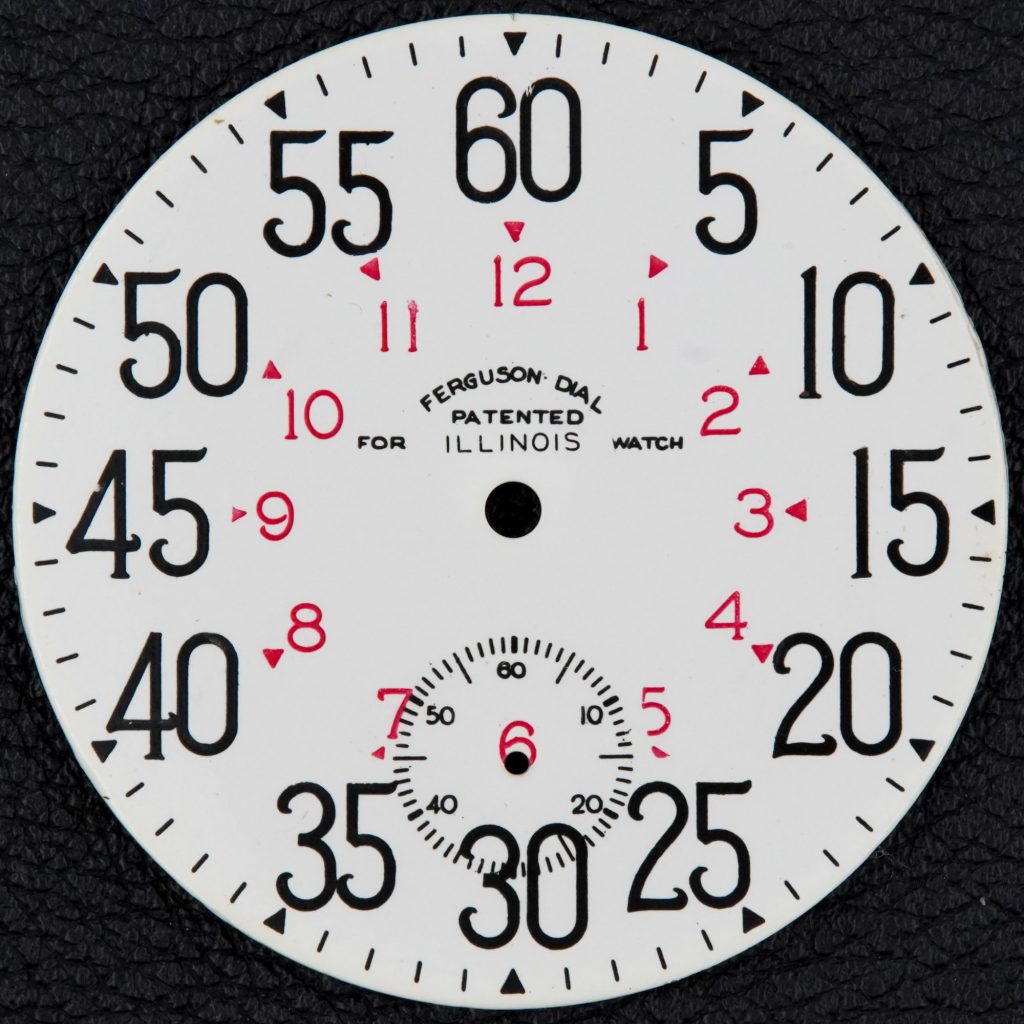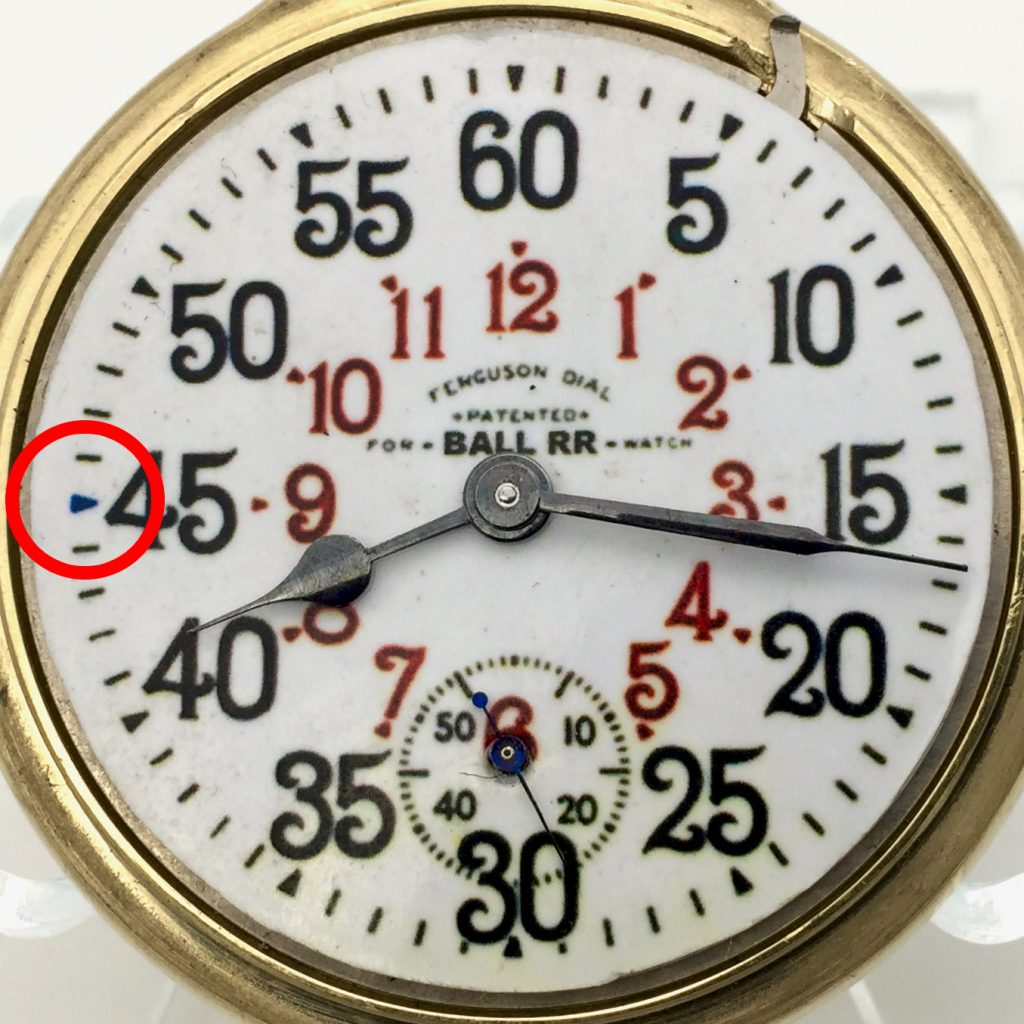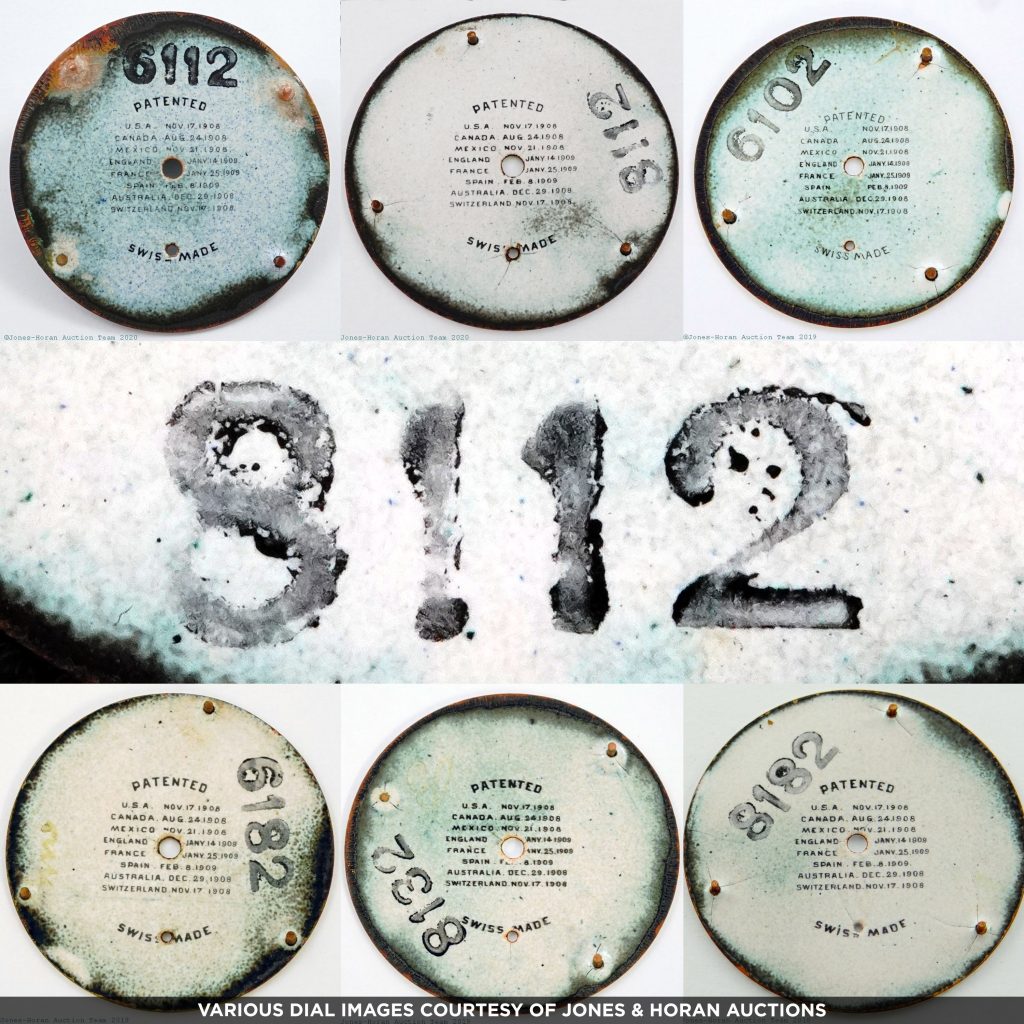Dials
Pictured: Elgin Colored Enamel Dial with Gold Embellishments, c.1880s. The 1880s proved to be a pivotal decade for the manufacturing of watch dials. Experimentation with different methods led to innovative.
Pictured: Elgin White Double-Sunk Enamel Dial, c.1900. The quartz watch is a relatively modern invention, allowing accurate timepieces to be produced inexpensively. However, the watchmaking industry was using quartz well.
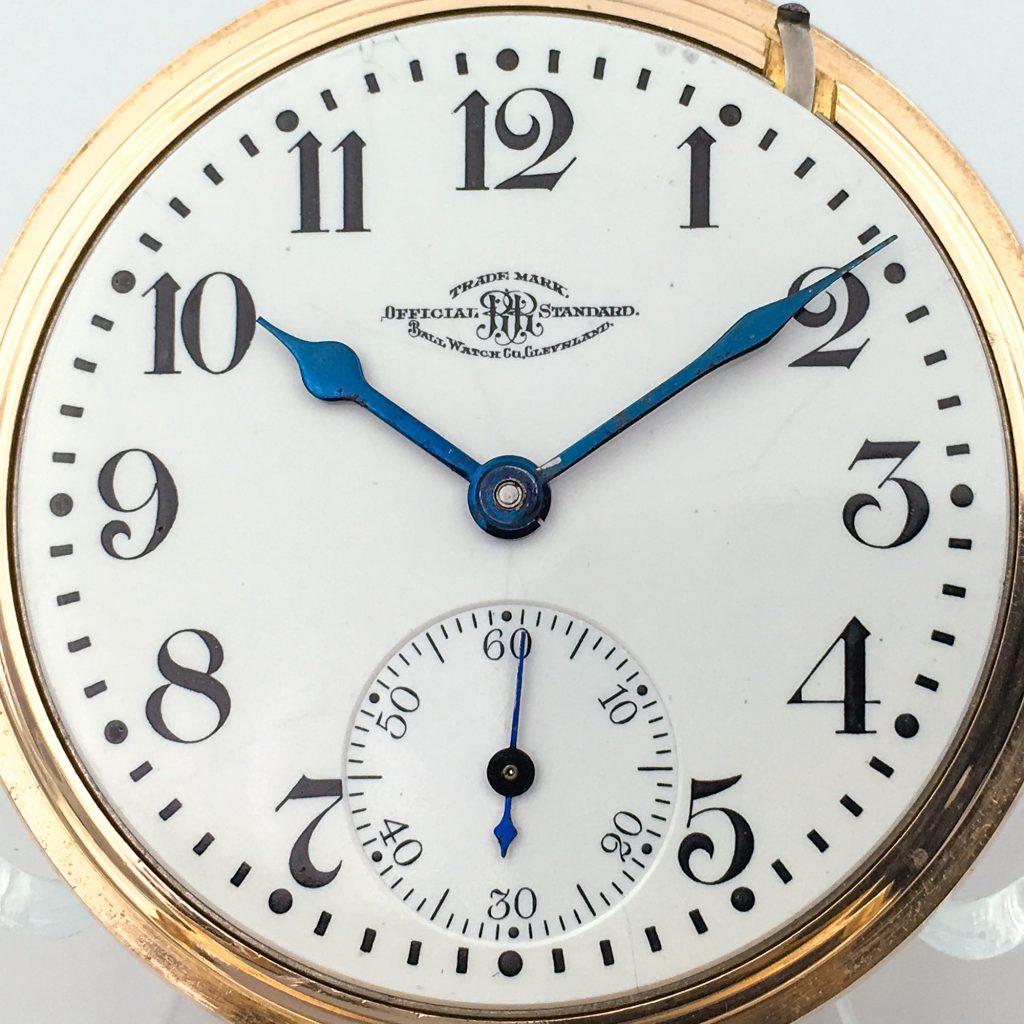
Pictured: Elgin National Watch Co. Watch with Conversion Dial. As more railroads required watches to feature a pendant at the 12:00 position to qualify for service, conversion dials became a.
Pictured: Elgin National Watch Co. “Sidewinder” Watch, Grade H.H. Taylor, c.1875. In addition to the more unusual dials that Webb C. Ball classified as “Freakish” Railroad Dials in his 1920.
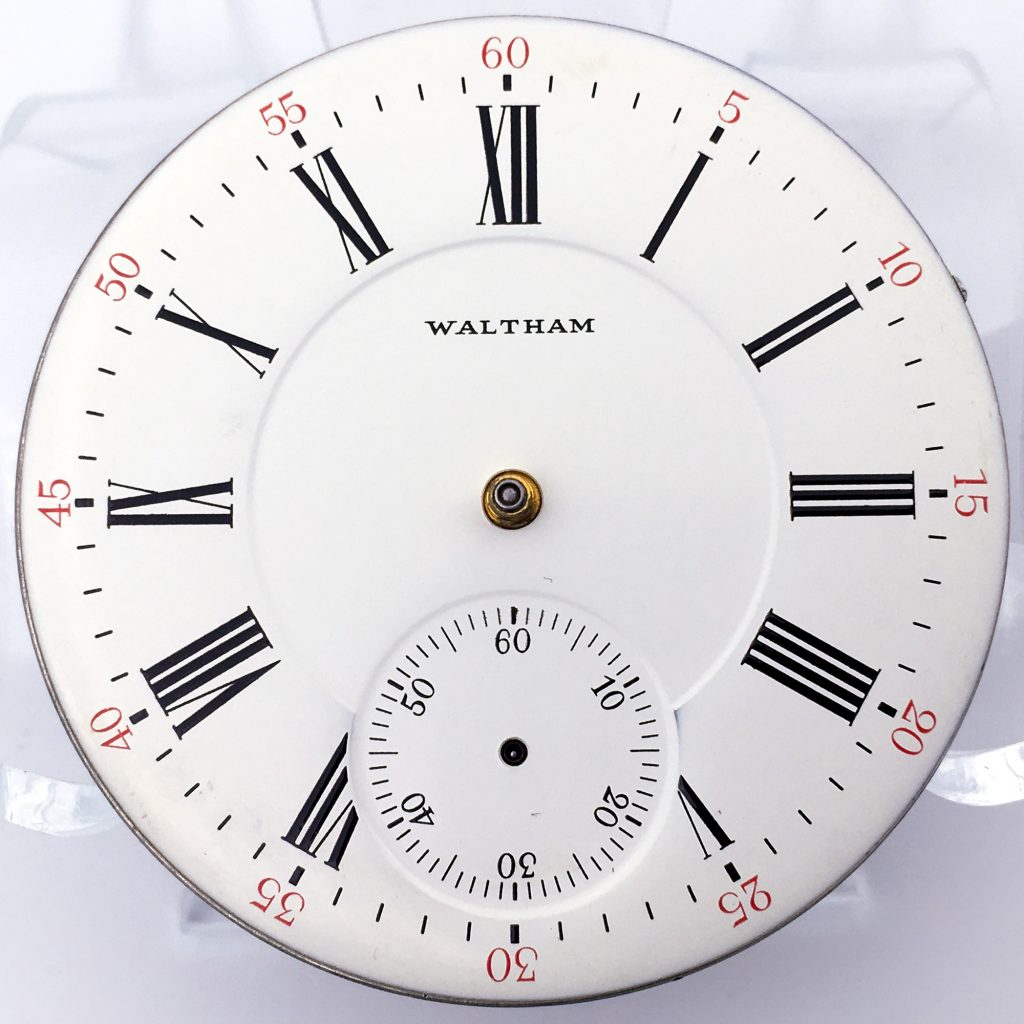
Pictured: LaRose Reproduction Illinois Ferguson Dial, c.1970s. Another popular source for post-era reproduction dials was S. LaRose Inc. This watch and clock supply company began in 1936 and operated for.
Pictured: Replica Ball RR Ferguson Dial, c.1980s. Because the patented Ferguson Dials are a favorite amongst collectors, many reproductions and replicas have been created to offer an expensive replacement option,.

